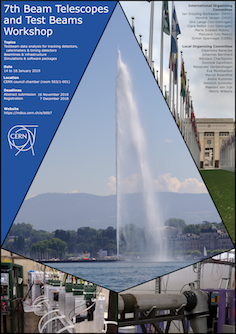Speaker
Description
During the High-Luminosity phase of the LHC conditions for the ATLAS tracking system will be severe in terms of radiation and occupancy, with the goal of accumulating a total of more than 4000 fb$^{-1}$ of data and up to 200 inelastic proton-proton interactions per beam crossing. In order to deal with these conditions, the entire tracking system will be replaced by a new all-silicon detector called the Inner Tracker (ITk). The ITk will consist of a barrel section and end-cap regions, each using a combination of pixel and strip detector layers. New radiation-hard sensors and front-end electronics will be used and are now under development. With module production expected to start in 2020, a full understanding of current prototype modules is crucial. This talk presents the results of tests of prototype strip detector modules, both un-irradiated and irradiated as well as end-cap and barrel types. Measurements were performed at DESY and CERN test beam facilities, using beam telescopes comprised of seven pixel layers for track reconstruction. The main focus of the analysis lies in the study of the spatial resolution, efficiency, noise occupancy, charge collection or cluster size of the modules, both in general and in respect to micro- or macro-features of the modules, like track positions within a strip or the edges of the sensors. The obtained results give confidence that the ITk strip detector will perform well for the full duration of the HL-LHC.




